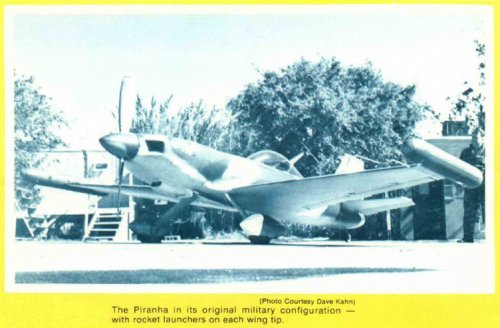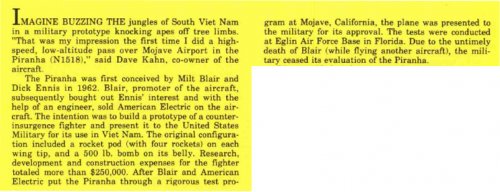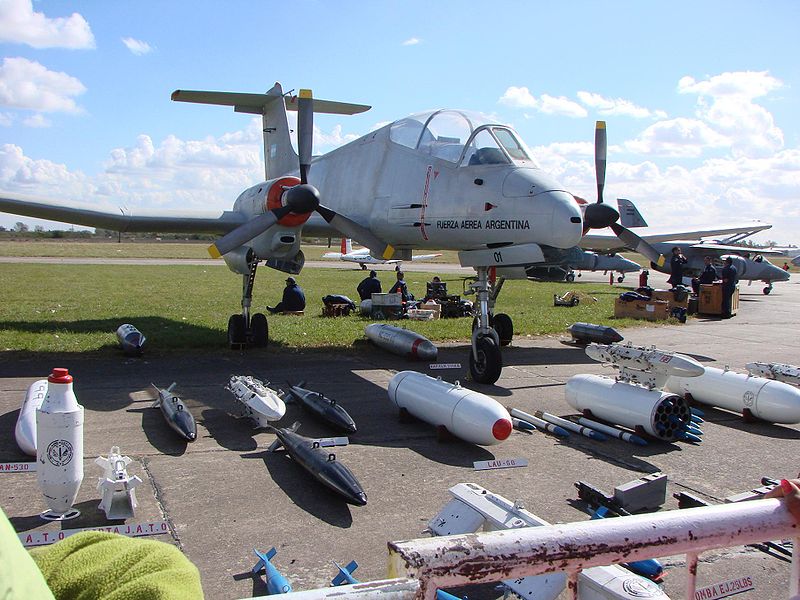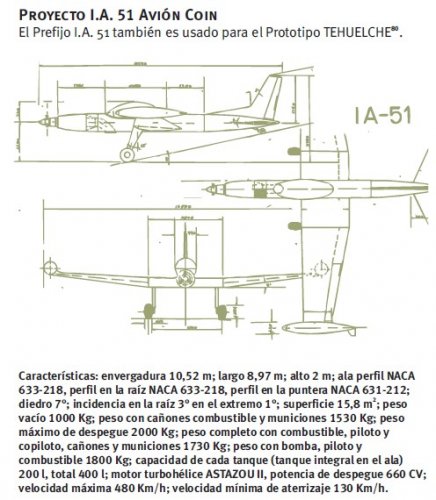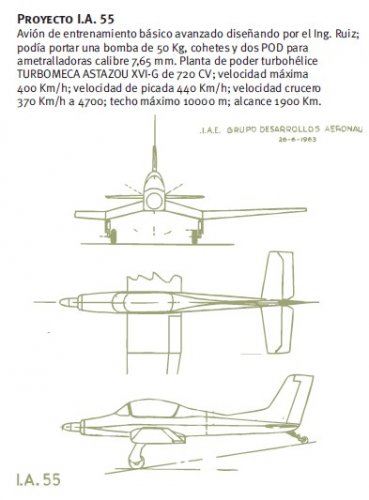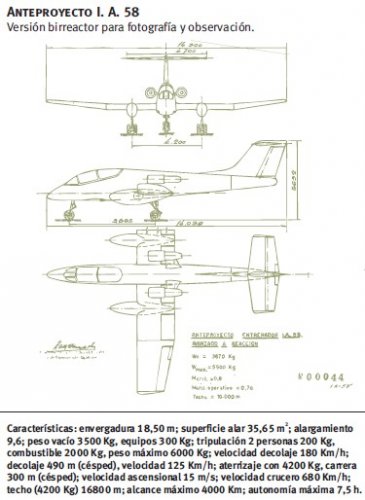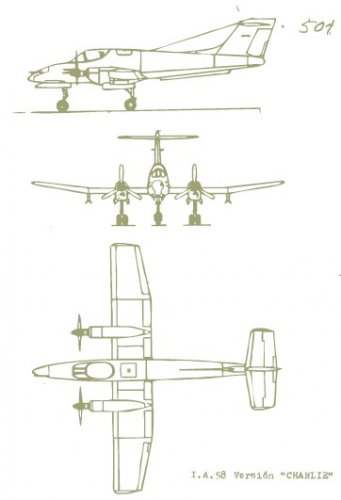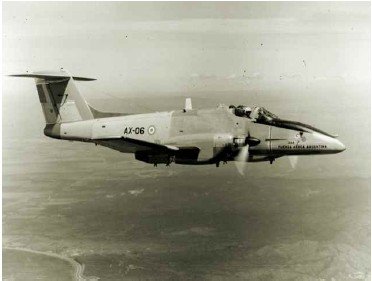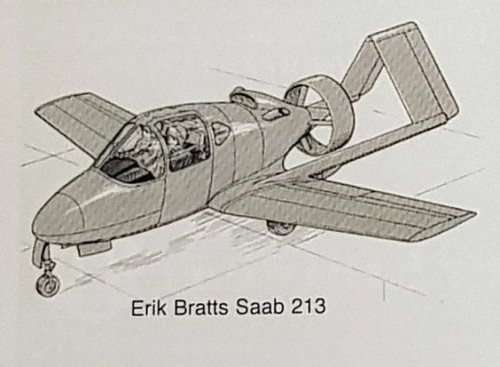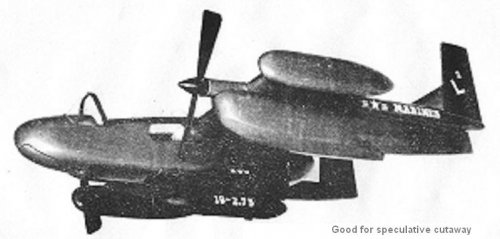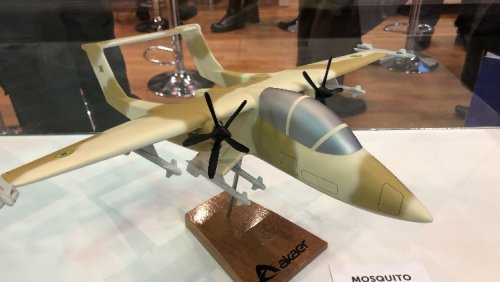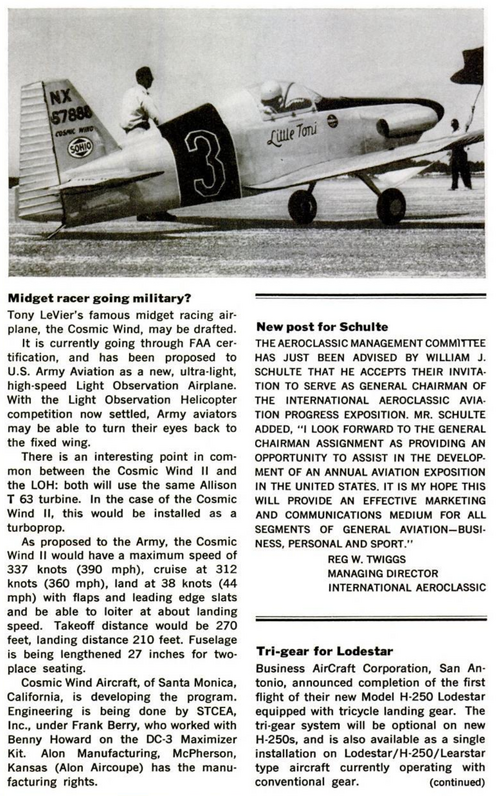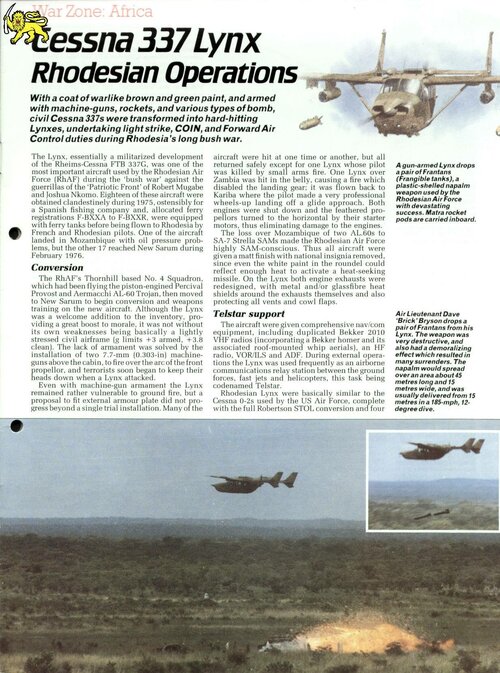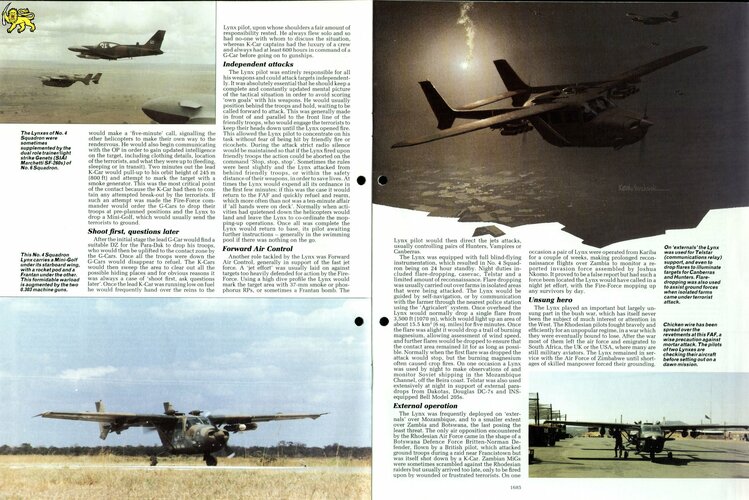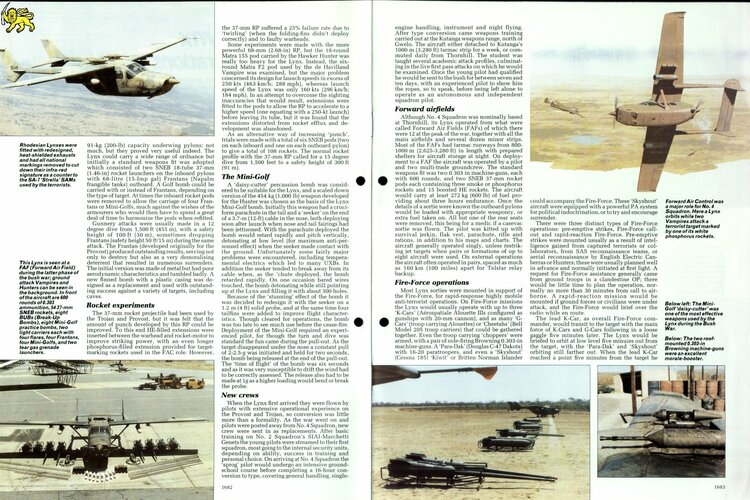frank said:
There was a prototype of the Beech Bonanza with a couple of racks under its wings. I also think I've heard of Piper doing something similar with their Cherokee Six. Could the Cessna O-1 & O-2 carry anything besides smoke rockets? Some T-34s were equipped with underwing racks. How about the Fairchild / Pilatus AU-23?
......................................................
This concept dates back to WW2 when an overly-aggressive US Army pilot hung bazooka tubes under the wings of his Piper L-4 Grasshopper. The Grasshopper struggled to take-off with all the extra weight!
Cessna 0-1 and O-2 were CAPABLE of carrying much more than smoke rockets, but too many overly-aggressive young pilots took too many risks, forcing generals to withdraw all but smoke rockets. During the Viet Nam War, generals decided that Bird Dogs could do far more damage by calling in fast air, artillery and even naval gun fire. Read "100 Feet Over Hell" by Jim Hooper or "Ravens" by Robin what's-his-name.
Fairchild-Hiller advertising depicts HU-23 Turbo-Porters (built under license from Pilatus) with a variety of bombs and rockets hanging under the wings along with a Gatling gun aimed out the cargo door. I doubt if Portrrs ever fired a shot in anger.
The first batch of SM-92 Finists were sold to Russian Border Patrol with similar weapons hanging under the wings and protruding from the cargo door.
Most recently, Cessna has sold batches of 208 Caravans to a variety of third-world air forces. Cessna advertising literature offers Caravans with a wide variety of sensors, rockets along with a Gatling gun aimed out the cargo door. I suspect that Caravans are primarily used for the same roles as drones: lofting sensors and dropping (100 pound) Hellfire missiles. He'll fires were originally developed as anti-tank rockets to be fired from AH-64 Apache helicopters, but over the last decade, most Hellifres have been fired at Al Queda (and affiliates) pedestrians, buildings or soft-skinned vehicles. Hellfire's' greatest advantage is its accuracy, which reduces collateral casualties.
Third-world air forces get Caravans because first-world nations are not willing to sell the latest generation of un-manned drones.
By the same logic, the USAF, US Army and CIA fly a variety of Beechcraft King Airs, PC-12, business jets, etc. festooned with the latest electronic sensors, fake (AM top 40) radio transmitters, spoof cell phone towers, etc. to interfere with mujaheddin communications. Those jobs could also be done by drones, but I suspect that drone manufacturers are not able to make drone airframes fast enough.

